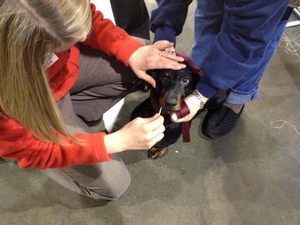In my last blog, I defined words that described when symptoms may present themselves in a dog affected with a genetic condition. Today’s topic of discussion is how those symptoms show up (or not show up). These terms are easily confused with each other. I’ve even heard some geneticists can get these definitions mixed up. Let me introduce two terms: Incomplete penetrance and variable expressivity.
Incomplete penetrance is a term that describes symptoms, which may or may not be present in a dog with an at-risk or affected genotype. The dog has the mutated gene in the right number of copies to cause the disease, but the dog may not show physical symptoms of the disease. As you can imagine, this can cause some confusion when examining the pedigrees of your dogs and this is when genetic testing becomes an important tool. If genetic testing is positive, we know the dog has the mutation that causes the disease. Regardless if there are symptoms, this dog can pass this mutation on to its offspring. Knowing this information may impact breeding practices, as discussed in previous blogs. The concept of incomplete penetrance is an ...








